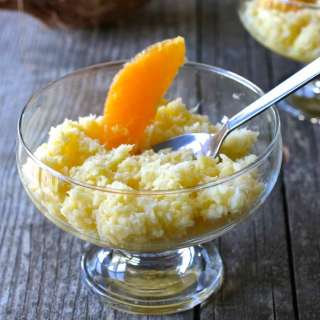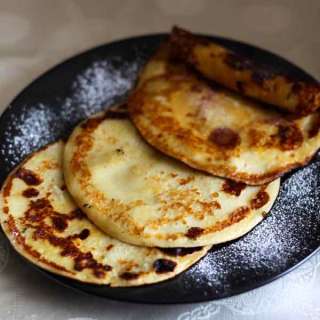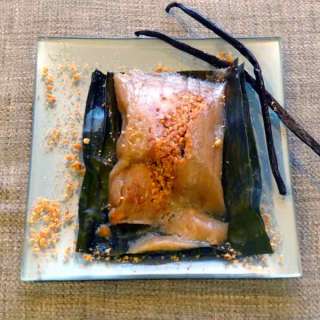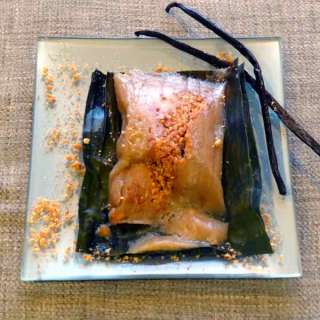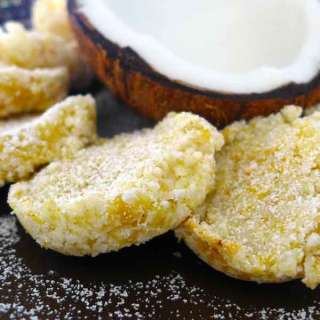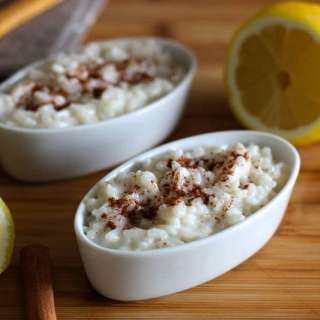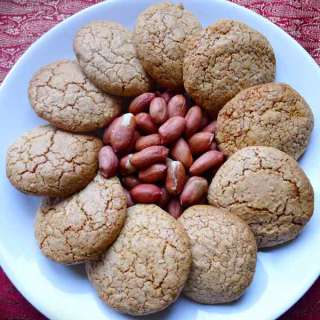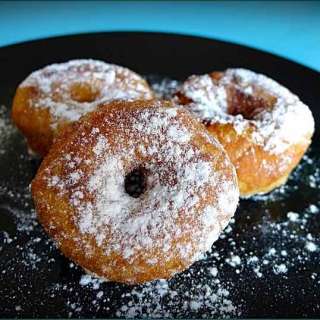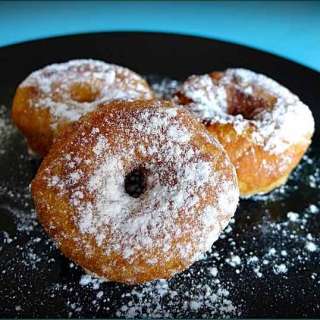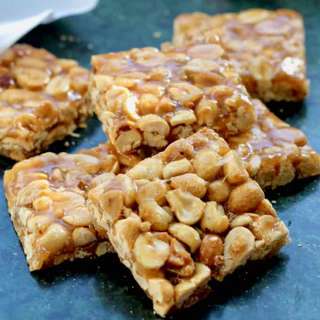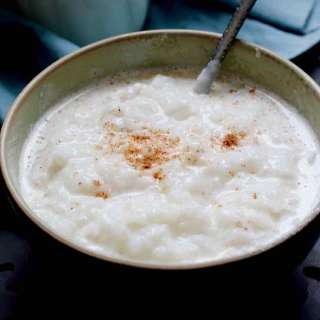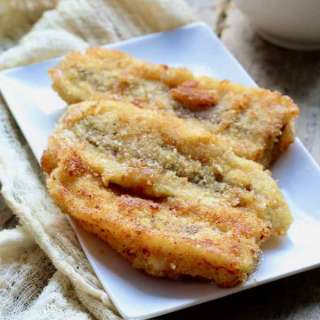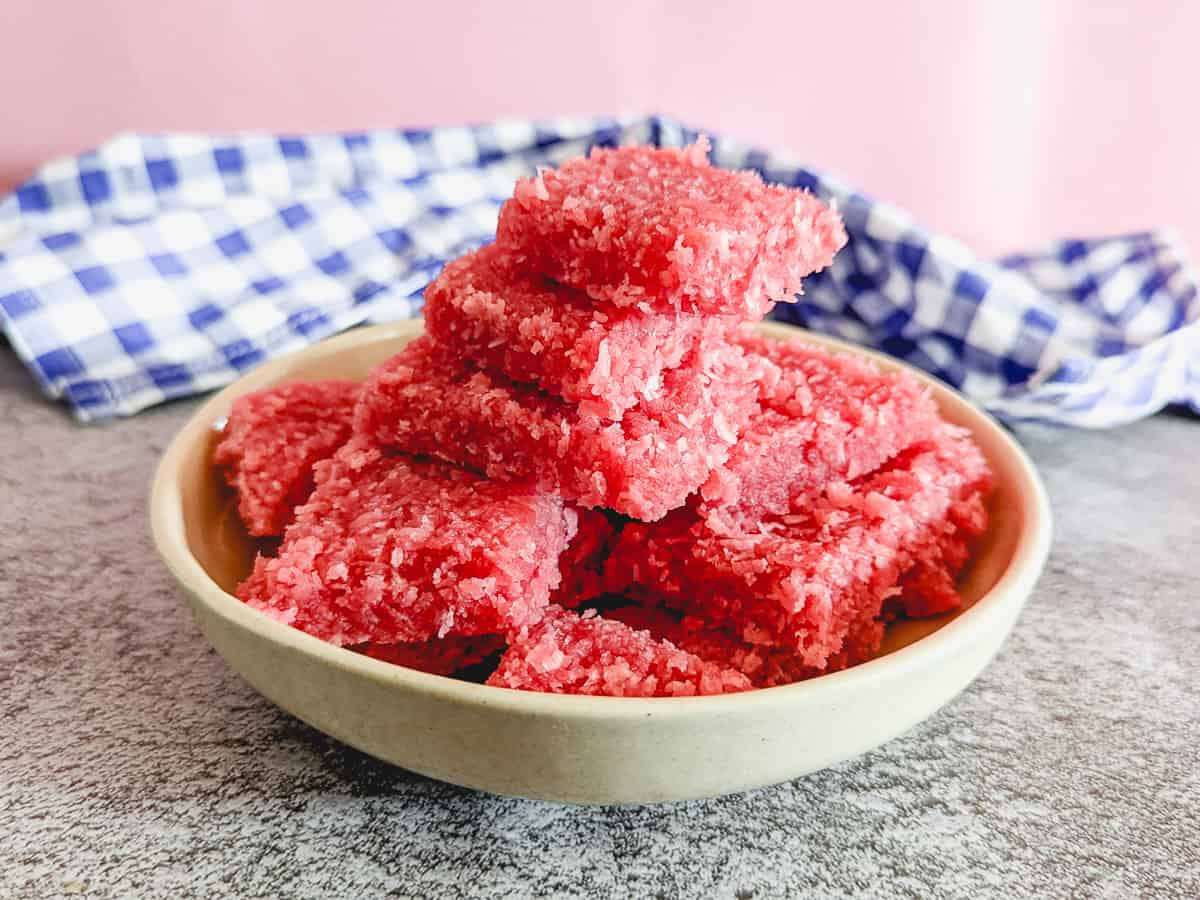
Kashata
User Reviews
5.0
6 reviews
Excellent

Kashata
Report
Looking to try out a new no-bake international dessert or snack? Then this East African coconut Kashata is just the thing for you.
Share:
Ingredients
- 1⅓ cups sugar
- 1 cup water
- 2 cups grated or desiccated coconut
- ½ teaspoon cardamon powder (use more if preferred)
- 1-3 drops red food colour (or ½ teaspoon food colouring powder - use more if preferred)
Instructions
- Add the water and sugar to a heavy-bottomed saucepan or pot. Stir until the sugar dissolves. Allow the sugar to boil to a syrup (test whether it is ready by spooning a small amount to a plate, allowing it to cool enough so you can touch it, and stretch it between your fingers. It should form a single string).
- Add the food colour, cardamon powder, grated or desiccated coconut, and combine. Reduce the heat to a low and cook for about 5-10 minutes, or until most of the liquid has evaporated and the Kashata has formed into a homogenous mass.
- Transfer the mass to a greased plate or to a piece of parchment paper and spread it out so it has your desired thickness. Allow it to cool slightly to a point where it is still warm.
- While the Kashata is still warm, use a knife to lightly make cut marks on the surface, without cutting all the way through. This will show you where to cut once it has cooled.
- Once cooled, cut it to your desired shapes and serve it as a snack or dessert. Alternatively, store it in airtight jars for later.
Equipments used:
Notes
- Should you grate your own coconut, make sure to get rid of any coconut shells as these can be unpleasant to bite into.
- Allow the sugar syrup to cook properly to a one-string consistency, before adding in the grated coconut so your Kashata binds properly. What this means is that when you stretch the sugar syrup between your fingers, it should be able to stretch to one string.
- Use vanilla extract if you do not have cardamon powder. Whole cardamon seeds are also okay to use, just make sure to remove them before allowing your Kashata to cool.
- The key to good Kashata is cooking at low heat once you have added all your ingredients.
- Should your Kashata be too soft to cut, please do not panic. Simply reheat it for a few more minutes to allow any excess moisture to evaporate. Similarly, return it to the heat if too firm and crumbling, and reheat it along with two tablespoons of water.
Nutrition Information
Show Details
Calories
86kcal
(4%)
Carbohydrates
12g
(4%)
Protein
0.5g
(1%)
Fat
4g
(6%)
Saturated Fat
4g
(20%)
Polyunsaturated Fat
0.05g
Monounsaturated Fat
0.2g
Sodium
3mg
(0%)
Potassium
38mg
(1%)
Fiber
1g
(4%)
Sugar
11g
(22%)
Vitamin C
0.1mg
(0%)
Calcium
2mg
(0%)
Iron
0.2mg
(1%)
Nutrition Facts
Serving: 25Serving
Amount Per Serving
Calories 86 kcal
% Daily Value*
| Calories | 86kcal | 4% |
| Carbohydrates | 12g | 4% |
| Protein | 0.5g | 1% |
| Fat | 4g | 6% |
| Saturated Fat | 4g | 20% |
| Polyunsaturated Fat | 0.05g | 0% |
| Monounsaturated Fat | 0.2g | 1% |
| Sodium | 3mg | 0% |
| Potassium | 38mg | 1% |
| Fiber | 1g | 4% |
| Sugar | 11g | 22% |
| Vitamin C | 0.1mg | 0% |
| Calcium | 2mg | 0% |
| Iron | 0.2mg | 1% |
* Percent Daily Values are based on a 2,000 calorie diet.
Genuine Reviews
User Reviews
Overall Rating
5.0
6 reviews
Excellent
Other Recipes

